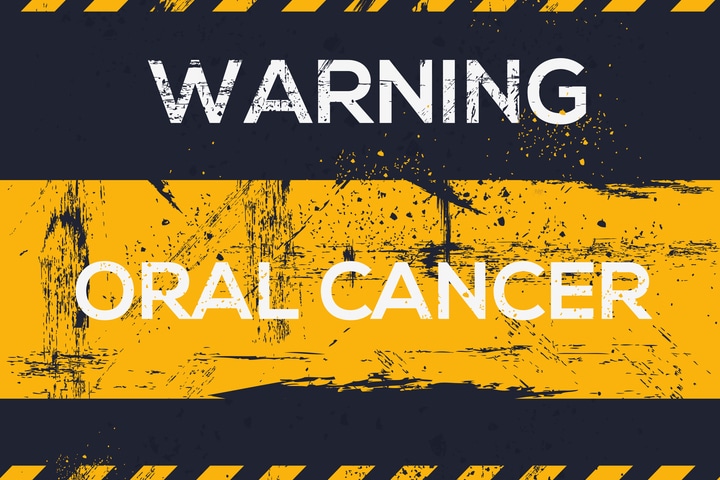
The best way to prevent oral cancer is to avoid tobacco (both cigarette and chewing tobacco). Tobacco use together with alcohol has been shown to greatly increase the risk of oral cancer.
It is unclear whether vaping is also linked to increased risk, but some early studies are suggesting that it is.
Because there are so many benign tissue changes that occur normally in your mouth, and some of these changes may mimic the look of a dangerous tissue change, it is important to have any ulcer or discoloured area of your mouth, which does not heal within 14 days, looked at by a professional.
You should know:
- Oral cancer often starts as an ulcer on the floor of the mouth, side of the tongue or on the lips. You may not notice it, or if you do, it may seem inconsequential.
- It is also worth noting that the lips are a not uncommon, but often overlooked, site for non-melanoma skin cancers. The lower lip is much more likely to be affected due to more sun exposure.
Other signs include:
- A sore that bleeds easily or does not heal
- A colour change of the oral tissues
- A lump, thickening, rough spot, crust or small eroded area in the mouth
- Pain, tenderness, or numbness anywhere in the mouth or on the lips
- Pain or difficulty chewing, swallowing, speaking or moving the jaw or tongue
- A lump or mass which can be felt inside the mouth or neck
- Hoarseness which lasts for a long time
- Any numbness in the oral/facial region
- A change in the way the teeth fit together
Oral cancers can occur in people who do not smoke and have no other known risk factors.
Studies suggest that a diet high in fruits and vegetables may prevent the development of potentially cancerous lesions. And of course … this is another reason to see your dentist regularly for a check-up!
This article was updated from the original on 13 August 2020.
